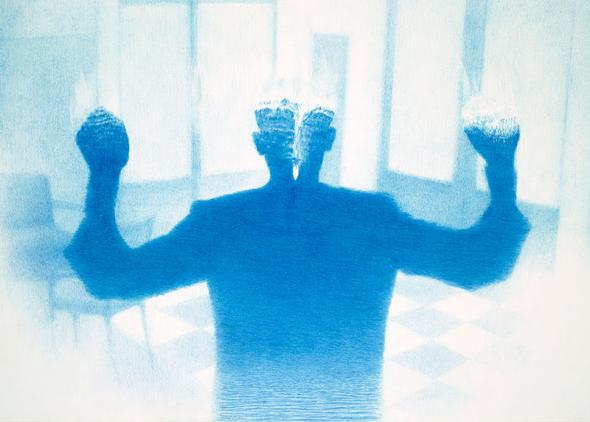Brussels' Lumumba Square: a site of controversy
On 30 June 2018, after several years of debate, the municipality of Brussels will open a square named after and in honour of Patrice Lumumba, the key figure in the history of Congolese independence and, in 1960, the short-lived Prime Minister of the Republic of Congo. Significantly, the inauguration has been scheduled for the anniversary of Congolese independence: Belgian colonial rule, in place since the 1884 Berlin Conference, came to an end on 30 June 1960.
Many things happened in the short time between the celebrated anti-colonial speech Lumumba de-livered at the ceremony of independence, in front of King Baudouin of Belgium and President Joseph 2Kasavubu, and his assassination at the hands of secessionist Katangan forces on 17 January 1961. Lumumba had only been in office for about three months when he was dismissed in September 1960, following a coup led by the military chief Joseph-Désiré Mobutu and as a civil war brought the country into chaos. Lumumba’s death turned Mobutu, the leader of the Congolese National Movement, into a pariah of the African emancipation struggles with which much of the Central African diaspora identify.
 The Big Wave Rider | 2017 | Pedro Paixão
The Big Wave Rider | 2017 | Pedro Paixão
The place the municipality have chosen is particularly emblematic, as it is situated at the entrance to Matonge, the African quarter in the centre of Brussels, a few meters from the Royal Palace and, above all, close to the statue of King Léopold II on horseback. This statue is one of the many monuments in the Belgian capital that still hark back to the nation’s colonial past, and has been the target of repeated demonstrations because of the univocal discourse about colonial memory it represents. It is important to note that the unanimous decision of the Brussels City Council on 23 April 2018 to inaugurate the new square acknowledges the long struggle for this cause on the part of Belgo-Congolese diaspora associations and other related political movements. The municipality has also announced a public competition to choose the artist who will create a new statue for the square. That a monument to Lumumba will soon coexist in this symbolic part of Brussels, and within a short distance from the statue of the knight-king who began the Belgian colonial exploration of the Congo is a first step towards a changed discourse about the colonial past of a nation whose history is so strongly anchored to colonial exploration. In fact, these developments can be read alongside the discussions about the Central African Museum in Tervuren (opened in 2005 with an exhibition entitled “La Mémoire du Congo” [Memories of Congo]), and whose reinauguration is meant to stand for a critical gaze on the question of curating African artistic and cultural legacies in a post-colonial context.
Be that as it may, the presence of Lumumba in Belgium has been highly controversial. Recently, the cities of Charleroi and Mons have inaugurated streets or plaques relating to Congolese independence and its most celebrated figure. The issue of colonial memory in European public spaces has also been a broader topic of debate, as in the case of Berlin (already discussed here by António Sousa Ribeiro) or Madrid, inter alia. Those opposed to recognising this history, however, notably associations of former Belgian settlers, have protested against the commemoration of a figure they consider the main reason for political instability and violence (against both Congolese and Belgians) following the independence of the Congo. The complexity of the concept of collective memory reveals itself in these cases of conflict between private memories.
With what significance do local and national public authorities in today’s Europe now want to include another narrative, not just the colonial narrative, in their official discourse about the past? Such a desire is clear in moments such as the Brussels municipality’s unanimous decision about Lumumba Square. That is, who has the responsibility to decide about how memories of colonialism should be brought forward in a Europe that is itself the child of colonialism? In other words, what does it mean that voices and visions of Europeans of African descent are taken into account in discourses about colonial legacy by a Europe that has struggled to recognize its own traumas and blind-spots? These are some of the questions to which the controversy over Lumumba Square seems to point.In the end, the issue of decolonization in the city of Brussels, and by extension in Belgium, has an undeniably generational dimension. Congolese and Belgo-Congolese men and women of the second and third generations are the main protagonists in the struggles for a narrative that moves away from the paternalistic dynamics of King Leopold II’s deeds and the benefits of colonization. By contrast, those who refuse to recognize the figure of Lumumba as a legitimate actor in the history of decolonization are mostly people who have “in the flesh” the colonial experience. In fact, according to media reports, when the inauguration of the square was announced, the Mayor of Brussels Philippe Close himself suggested that the end of the taboo about officially paying tribute to the figure of Lumumba was probably due to the emergence of “another generation.” At the same time, he stressed that whilst “it is regrettable that we cannot change the past, it remains possible to bring memories closer.” In this sense a post-memory approach may prove essential in building a dialogue about memories of Euro-pean colonial heritage.
Article produced for project MEMOIRS – Children of Empire and European Postmemories, funded by the European Research Council (ERC) under the European Union’s Horizon 2020 research and innovation programme (grant agreement No 648624).